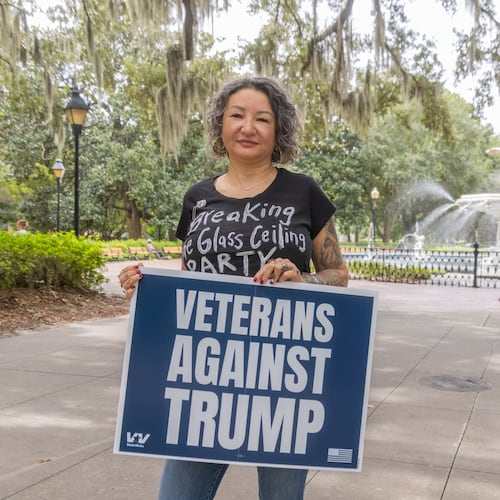Since the election, there have been all sorts of attempts to explain why the pundits' predictions of an easy win for Hillary Clinton were so wrong. One of the explanations offered is that the opinion-makers in the mainstream media live in a bubble, detached from mainstream America. Some media types (including this Washington Post columnist ) have suggested that news outlets should open more bureaus in middle America to combat this tendency toward coastal isolation. But just how acute is the problem of the coastal-elites bubble?
It turns out there's a way to measure it. And the measurement tool was created by the man whose work on the stratification of American culture is a big help in understanding what happened in 2016.
I'm talking about the "bubble quiz" by Charles Murray, a scholar at the American Enterprise Institute whose 2012 book "Coming Apart" remains a must-read. The quiz appears in the book, but after Murray appeared on PBS' "NewsHour" last year, the broadcaster posted an adapted version of the quiz on its website (click here to take it) . More than 142,000 people have taken the quiz since then, and last week Murray posted his conclusions about the (self-reported) results of quiz-takers.
First, a bit about the quiz. The point is to determine how insulated one is from mainstream American culture. The lower one's score, on a scale of 0-100, the thicker one's bubble. The average score from the PBS version is a 45. (For the record, I got a 54, which means my bubble is thinner than average but still pretty much in the middle nationally. See picture at right.)
Lo and behold, the thickest bubbles in America, as measured by the ZIP codes of the quiz respondents, exist right where you might expect: In the Northeast and on the West Coast.
You can see the entire listing here, but I'll summarize the results:
- Of the 100 thickest ZIP code bubbles, 34 are in the New York City metro area.
- Next comes the Bay Area: 29 are in Silicon Valley or San Francisco.
- Boston is next with 15, followed by Los Angeles (8). If you're keeping track, that's 86 of the top 100 in those four cities, with 14 in the entire rest of the country.
- The most bubblicious city not on a coast is Chicago (4), in what is suddenly an isolated blue outpost in the Midwest. Then comes Philadelphia (2).
- Eight cities have one of the top 100 ZIP codes: Baltimore, Houston, Miami, Pittsburgh, Providence, San Diego, Seattle and Washington.
All 100 of these ZIP codes had average scores below 30 on Murray's 0-100 scale. In other words, they're well below that national average of 45. If you're surprised our nation's capital had only one entry on the list, so was Murray. However, he noted the average score among the Washington elite who took the quiz was still below average: 33.8. Washington is indeed in a bubble compared to the rest of America; it just isn't as thick a bubble as we see in New York, Boston, the Bay Area and L.A.
How does all this get back to the disconnect we saw in 2016? Here's Murray:
"The people living in zip codes in the top two (socioeconomic status) percentiles include almost all of those who run the nation's culture, economy, and politics. And that's where the bubble scores plunge."
And, in a follow-up piece he posted Tuesday, taking on the criticism that small-town Americans live in just as much of a bubble as urban elites:
"(I)t's not just any old bubble that I'm interested in, but the bubble in which too many members of the new upper class live. The reason their bubble poses problems whereas the bubble in an ethnically homogeneous small town does not is an asymmetry of power. The people in ethnically homogeneous small towns don't affect the lives of the new upper class. The new upper class pervasively affects the lives of all Americans everywhere, through their effects on the nation's politics, economy, and culture. What we saw in the last presidential election was in part a result of the members of the new upper class being isolated in their bubbles. It would be good for the nation if they got out more."
Indeed, only five of the top 100 ZIP codes for Murray's bubble quiz are in states that went for Trump: the two in Philly, and the one apiece in Houston, Miami and Pittsburgh. The rest are in places that went heavily for Clinton: New York (59 percent), California (62 percent), Massachusetts (61 percent), Illinois (55 percent), Maryland (61 percent), Rhode Island (55 percent), Washington (54 percent), District of Columbia (93 percent).
If those are the states where our media and cultural elites live, is it any wonder they were flabbergasted Donald Trump won? Their peers and neighbors were nothing like the people in the majority of states, which went for Trump. Yes, they had opinion polls to back up their belief of a Clinton win, but their apparent inability even to conceive of a Trump win was born of more than those polls. Perhaps that's why those of us living in less insulated areas, looking at the same polls, saw reason to believe Clinton was ahead but Trump was well within statistical striking distance .
But even more to the point, that bubble wasn't just about not being able to foresee the election results. It was about being totally detached from the reasons voters opted for Trump. If you live in a world where everyone is prospering, cheering on rapid social changes, and benefiting (or at least not suffering) from the ever-greater power Washington, D.C., wields over the rest of us, you probably had a much harder time recognizing that people were ready to roll the dice on the changes Trump might bring.
About the Author
The Latest
Featured


